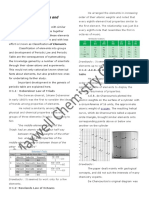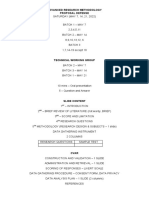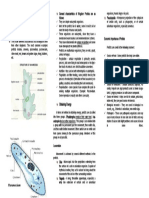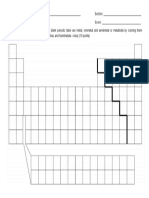0% found this document useful (0 votes)
110 views1 pageLEC - Tracking The Path and Constructing The Periodic Table
The document outlines the historical development of the Periodic Table, highlighting contributions from chemists like Johann Dobereiner, John Newlands, Dmitri Mendelev, and Lothar Meyer. It explains the structure of the Periodic Table, including groups, periods, and classifications of elements as metals, nonmetals, and metalloids. The Periodic Law states that the properties of elements vary periodically with atomic number.
Uploaded by
Mariz RaymundoCopyright
© © All Rights Reserved
We take content rights seriously. If you suspect this is your content, claim it here.
Available Formats
Download as DOCX, PDF, TXT or read online on Scribd
0% found this document useful (0 votes)
110 views1 pageLEC - Tracking The Path and Constructing The Periodic Table
The document outlines the historical development of the Periodic Table, highlighting contributions from chemists like Johann Dobereiner, John Newlands, Dmitri Mendelev, and Lothar Meyer. It explains the structure of the Periodic Table, including groups, periods, and classifications of elements as metals, nonmetals, and metalloids. The Periodic Law states that the properties of elements vary periodically with atomic number.
Uploaded by
Mariz RaymundoCopyright
© © All Rights Reserved
We take content rights seriously. If you suspect this is your content, claim it here.
Available Formats
Download as DOCX, PDF, TXT or read online on Scribd
/ 1





































































